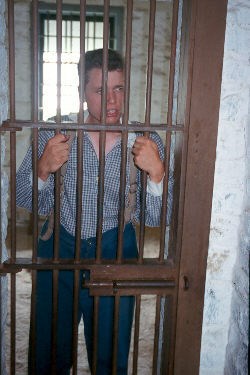
The most serious common crime during the first half of the nineteenth century was desertion. Between 1820 and 1860, the desertion rate averaged 14.8% per year. In 1830 alone, of the 5231 soldiers enlisted, 21%, or 1251, of them deserted. Soldiers deserted for many reasons, including scanty diet, distaste for army regimentation, indebtedness, oppressive treatment, evasion of lawful punishment, fear of combat, and gold-hunger. Authorities had to be particularly alert on payday, men with money were more likely to give their outfits "the grand bounce," than men without money. Soldiers at isolated posts like Fort Scott might get paid for six or eight months at one time; two post commanders cited bulk payments as an inducement for desertion. The customary punishment for desertion was hard labor and dishonorable discharge. Some deserters were also branded with a "D." During times of war, death by hanging or a firing squad was the normal punishment for desertion. Before the Civil War, deserters might be flogged or branded as a matter of course. In one case at Fort Scott, a soldier was sentenced to "receive fifty lashes on his bare back," and to a stoppage of pay for six months. In another incident, the soldier was sentenced to confinement and two months hard labor and to refund the United States thirty dollars paid for his apprehension. Crime and Punishment on the Frontier: Fort Laramie Case Study by John McDermott The Old Army: A Portrait of the American Army in Peacetime, 1784-1898 by Edward M. Coffman, copyright 1988 by Oxford University Press, Inc. (used by permission), and from information in Fort Scott's archives. |
Last updated: July 25, 2016

